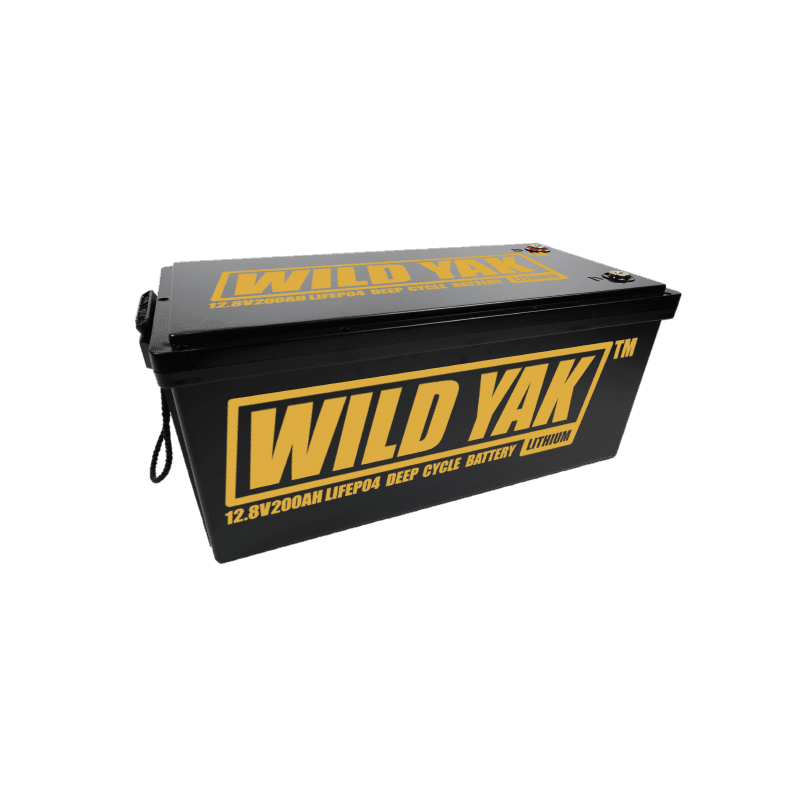The Best Marine Lithium Battery Installation Guide by Wild Yak Battery
Introduction
For boaters and marine enthusiasts, a reliable power source is essential to ensure smooth sailing and extended trips on the water. As lithium battery technology advances, more boat owners are turning to high-performance, lightweight lithium batteries for their marine applications. In this guide, we present the best marine lithium battery installation guide to help you upgrade your boat's power system safely and efficiently. We'll also showcase how Wild Yak Battery’s innovative lineup—including the 12V 100Ah, 12V 200Ah, and 24V 100Ah models—can provide the durability, performance, and safety required for marine environments.
Why Choose Marine Lithium Batteries?
Lithium batteries, especially those based on LiFePO4 technology, offer several advantages over traditional lead-acid batteries when used in marine settings:
- Lightweight & Compact: Reduce overall vessel weight and free up space for additional equipment.
- Extended Cycle Life: With thousands of charge-discharge cycles, these batteries deliver long-term reliability.
- Rapid Charging: Get back on the water faster with efficient charging profiles.
- Enhanced Safety: Built-in battery management systems (BMS) help prevent overcharging, overheating, and deep discharging.
- Consistent Performance: Even under demanding marine conditions, lithium batteries provide stable voltage and reliable power.
Step-by-Step Installation Guide
1. Planning Your Installation
- Assess Your Needs: Determine the power requirements for your boat’s systems, such as trolling motors, navigation electronics, and lighting.
- Select the Right Battery: Wild Yak Battery offers multiple options, including the 12V 100Ah for compact setups, 12V 200Ah for higher capacity needs, and 24V 100Ah for systems requiring higher voltage.
- Review the Manual: Always consult the installation manuals provided with both your battery and marine equipment.
2. Preparing for Installation
-
Gather Tools and Materials:
- Appropriate gauge cables and connectors
- Wire strippers, crimping tool, and screwdrivers
- Multimeter for voltage checks
- Fuse or circuit breaker for overcurrent protection
-
Safety First:
- Disconnect any existing power sources.
- Wear protective gloves and safety glasses.
- Work in a dry, well-ventilated area.
3. Wiring the Marine Lithium Battery
-
Mount the Battery Securely:
- Place the battery in a designated, secure battery box or compartment that is resistant to moisture and vibration.
- Ensure proper ventilation to prevent overheating.
-
Connect the Positive Terminals:
- Use high-quality, marine-grade cables.
- Connect the battery’s positive terminal to the boat’s power distribution panel, ensuring that all connections are secure and corrosion-resistant.
-
Install Protective Devices:
- Mount a fuse or circuit breaker close to the battery’s positive terminal to protect against electrical overload.
-
Connect the Negative Terminals:
- Run cables from the battery’s negative terminal to the boat’s grounding point.
- Ensure that the grounding system is robust to prevent electrical faults.
4. Testing and Verification
-
Check All Connections:
- Use a multimeter to verify that the voltage across the system matches the battery’s rated output (e.g., 12V or 24V).
-
Initial Charging:
- Charge the battery fully with a charger specifically designed for LiFePO4 batteries. This step is crucial to balance the cells and ensure optimal performance.
-
Monitor the System:
- After installation, monitor the battery’s performance during the first few uses to ensure there are no issues with the wiring or connections.
5. Maintenance Tips
-
Regular Inspections:
- Periodically check the battery terminals and wiring for signs of corrosion, wear, or loose connections.
-
Temperature Management:
- Ensure the battery is stored and used within the recommended temperature range to maintain efficiency and prolong battery life.
-
Firmware and BMS Updates:
- If applicable, update the battery management system (BMS) firmware to keep up with the latest safety and performance enhancements.
Wild Yak Battery: Your Trusted Marine Power Solution
Wild Yak Battery’s marine lithium battery solutions are engineered with the harsh marine environment in mind. Our products offer a blend of durability, high performance, and advanced safety features, making them the ideal choice for marine installations. Whether you're outfitting a small fishing boat or a larger marine vessel, our 12V 100Ah, 12V 200Ah, and 24V 100Ah models are designed to meet your power needs with confidence and reliability.
Conclusion
Upgrading to a marine lithium battery system can significantly enhance your boat's power efficiency, reliability, and overall performance. By following this best marine lithium battery installation guide, you can safely install a high-performance lithium battery system that delivers superior power and longevity. Trust Wild Yak Battery for a seamless, reliable installation experience that keeps you powered on every adventure.

